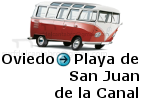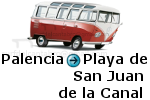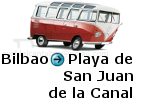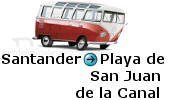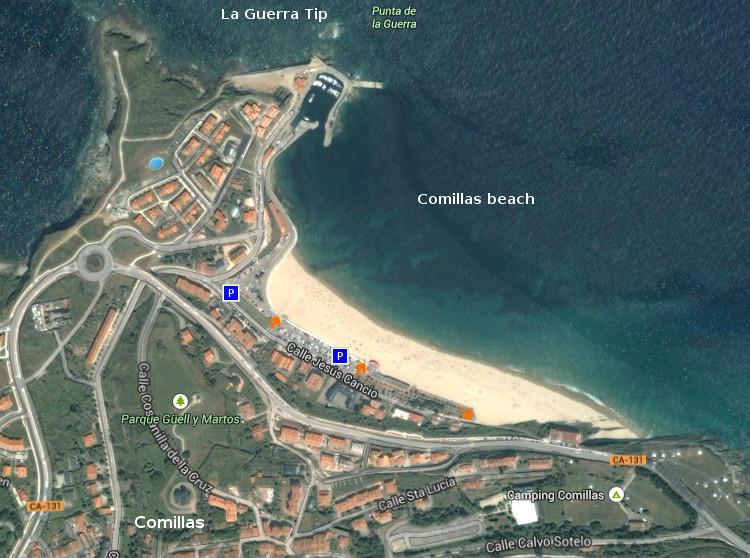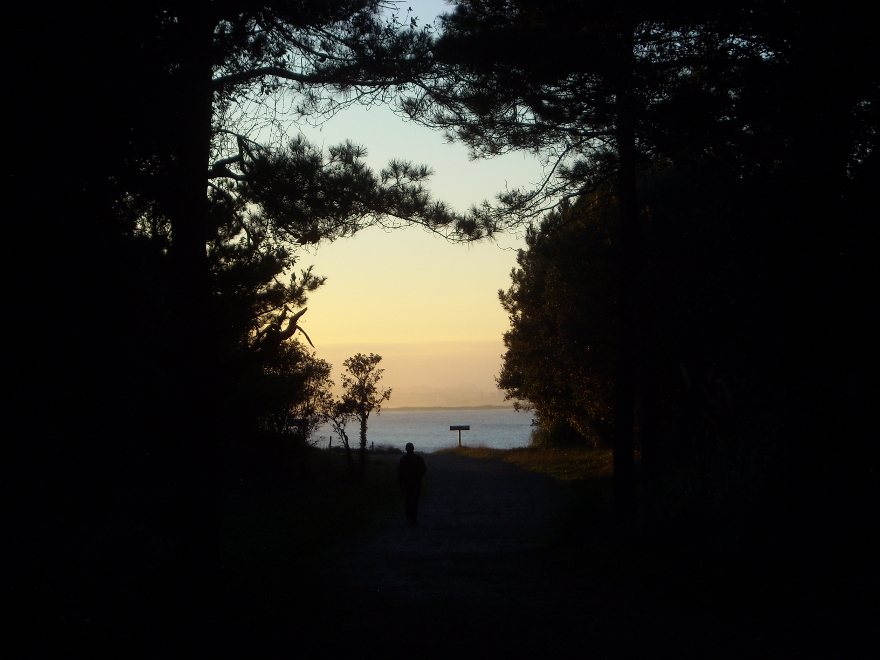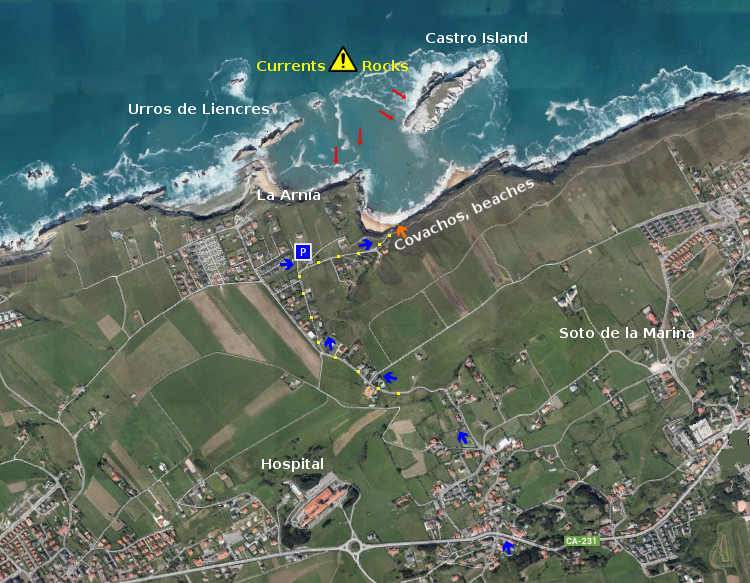 El día anterior se prolongo hasta la madrugada. Después de una barbacoa en un restaurante de la zona, regresamos a la playa. Pasada la medianoche, con la Luna de fondo, nos sentamos sobre la arena. La gente charlaba del buen día de olas que habíamos tenido. Maniobras, lugares especiales, spots vírgenes y viajes eran algunos de los temas de conversación. Algunas furgonetas y otros vehículos, dispersos por el aparcamiento, albergaban más gente. Un ambiente excitante y sencillamente feliz reinaba en Liencres.
El día anterior se prolongo hasta la madrugada. Después de una barbacoa en un restaurante de la zona, regresamos a la playa. Pasada la medianoche, con la Luna de fondo, nos sentamos sobre la arena. La gente charlaba del buen día de olas que habíamos tenido. Maniobras, lugares especiales, spots vírgenes y viajes eran algunos de los temas de conversación. Algunas furgonetas y otros vehículos, dispersos por el aparcamiento, albergaban más gente. Un ambiente excitante y sencillamente feliz reinaba en Liencres.
Allí encontré a Fabio. Este colega italiano, que lleva viviendo en Santander desde hace cinco años, estaba de fin de semana con unos amigos de su tierra. Preguntando por su día, me enteré que habían surfeado en Canallave olas cercanas a los tres metros. Mezclaban se la pasión, las personas y los grupos, rompiendo las distancias que se imponen en la capital, pues la libertad que el mar regala sobrevuela por encima del mundano ruido. Otro amigo suyo vino a pedir las llaves del coche. Presentados todos, al hablar del mar y la comida, reaccionaba con un enérgico gesto de afirmación y repetía unas palabras. Risas y música formaban una algarabía espontanea. Diferentes momentos, como huellas en un camino, aparecieron, existieron, vivieron hasta bien entrada la madrugada que finalizó con un dulce sueño.
Durante la mañana del Domingo las horas pasaron, para recuperar el cansancio de los días anteriores. A las tres de la tarde sonó el teléfono. A partir de las cinco nos volveríamos a encontrar en la playa. Recogí a un amigo en el centro de la ciudad, el resto seguía su ritmo; desconectado, perdido o ya en Liencres. El trayecto hasta Valdearenas sucedió con rapidez, la música acompañó el viaje y las historietas aceleraron la llegada. Con menos gente en la playa, el aparcamiento presentaba media ocupación. Un grupo de niños correteaba alrededor del puesto de socorristas, detrás las olas; dispersas en varios picos a lo largo del arenal. Preparados, fuimos caminado hasta la mitad de la playa. Un breve calentamiento precedió a la entrada. El contacto con el agua produjo una sensación agradable, reminiscencia arcaica difícil de describir. Remando lentamente, emprendimos el camino hacia las olas. La orilla se iba alejando a nuestras espaldas, empequeñeciendo toda la zona.
Llegamos a un punto desocupado. Permanecí sentado sobre la tabla durante un buen rato. A ambos lados de nuestra posición, más gente. Las olas corrían livianas, descargando energía en su trayecto y transportando sobre sí surfers ávidos de pasión. El olor del mar era multiplicado por una tenue brisa que se desplazaba sobre el agua. Una ola mayor pasó. En su transcurrir, un movimiento ondulante nos elevó, para bajar después el nivel por debajo de la cota marina. Gotas de agua salpicaban en la parte trasera de la onda, desprendidas de la cresta; produciendo un sonido progresivo que recorría unos metros y tamizaba la superficie. Multitud de detalles distrajeron nuestra atención y agotaron media hora en el reloj.
Otra ola asomó. Su tamaño la hacia perceptible en la distancia. Separados, cada uno eligió un lado. Ella avanzó con brío. Agité la mano, un silbido sonó al otro lado. Al contacto con la pared salimos disparados en busca del viaje. A dos metros de altura, la fuerza de la onda, arrastró la tabla . Tumbado, avancé varios metros hasta estabilizar el paso, para elevarme y descender hasta la base. El sonido del agua chocando pasaba a través de mí. Giré a la derecha, dejando atrás el rizo que apareció. En dirección a la cima de nuevo, dibujé una curva alargada. Otro giro para continuar. Navegando cerca del tope, corrió la tabla hacia la salida. Flexionado, con la mano rozando el muro, adelanté la rotura. Continuó la ola hasta la orilla, removiendo el agua, perdiendo fuerza. Aterrizando sobre la tabla, alcancé el extremo lejano de aquel área.
Un grupo de colegas se concentraba en una zona. Remando llegué hasta ellos. Sentado, estiré los brazos. Cargados de sensaciones, entre bromas, avanzó la tarde. El Sol, oculto por las nubes, emprendía su transformación hacia el final del día. La temperatura del agua animaba a seguir en el mar. Oteando el horizonte, volví la mirada hacia Robayera. Allí un claro se abrió, proyectando una elipse de luz sobre la superficie del mar. Durante unos segundos, permaneció aquella imagen; congelando el tiempo en un hermoso y sencillo recuerdo final.
Moments of Liencres. Sunday, sunset
 The previous day was prolonged until the dawn. After a barbecue in a restaurant of the zone, we returned to the beach. Around the midnight, with the Moon of bottom, we sat down on the sand. Everybody were chatting of the good day of waves that we had had. Maneuvers, special places, virgin spots and trips were some of the topics of conversation. Some vans and other vehicles, dispersed in the parking, had more people. An exciting and simply happy environment was reigning in Liencres.
The previous day was prolonged until the dawn. After a barbecue in a restaurant of the zone, we returned to the beach. Around the midnight, with the Moon of bottom, we sat down on the sand. Everybody were chatting of the good day of waves that we had had. Maneuvers, special places, virgin spots and trips were some of the topics of conversation. Some vans and other vehicles, dispersed in the parking, had more people. An exciting and simply happy environment was reigning in Liencres.
There, I found Fabio. This Italian colleague, who lives in Santander since five years ago, was of weekend with a few friends of his land. Asking him about his day, I found out that they had been surfing in Canallave; waves near to three meters. The passion, the persons and the groups, were mixing, breaking the distances that are imposed in the capital, because of the freedom that the sea gives and overflies over the mundane noise. Another friend of him came to ask for the keys of the car. After the presentations, when we spoke about the sea and gastronomy; he was reacting with an energetic gesture of affirmation and was repeating a some words. Laughs and music were forming a spontaneous gabble. Different moments, as prints in the way, had appeared; existed and lived, up to the the early morning that finished with a sweet dream.
During the Sunday morning the hours happened, to recover the weariness of the previous days. At three o’clock in the afternoon the telephone rang. At five o’clock we would return to the beach. I met a friend in the downtown, the rest was following his pace; disconnected, lost or already in Liencres. The distance up to Valdearenas happened with rapidity, the music accompanied the trip and the tales accelerated the arrival. With fewer people in the beach, the parking was presenting half occupation. A group of children was running around the rescuers’ position, behind there were the waves; that were dispersed in several beaks along of the sandbank. Prepared, we went up to the medium of the beach. A brief warming preceded at the entry. The contact with the water produced an agreeable sensation, archaic reminiscence difficult to describe. Rowing slowly, we started the way towards the waves. The shore was moving away to our backs, minimizing the whole environment.
We came to one unoccupied zona. I remained sat on the board during a good moment. On both sides of our position, more people. The waves were running softly, loosing energy in its distance and transporting on them surfers eager for passion. The smell of the sea was multiplied by a tenuous breeze that was moving on the water. A bigger wave happened. In its life, an undulating movement raised us up, to lower later the level below the marine level. Water drops were splashing in the back part of the wave, falling from the top; producing a progressive sound that was crossing a few meters and was sifting the surface. Multitude of details got our attention, exhausting half an hour in the clock.
Another wave began. Its size made it perceptible in the distance. Separated, each one chose a side. It advanced with force. I waved the hand, a hiss sounded to the other side. At the contact with the wall, we shot to search the trip. Two meters of height, the speed of the wave, dragged the board. Knocked down, I advanced several meters up to stabilizing it, to raise me up and to get down to the base. The sound of the water hitting was flying through me. I turned to the right, leaving behind the curl that appeared. Towards the top again, I drew an elongated curve. Another draft to continue. Sailing near the ceiling, it moved the board to the exit. Inflected, with the hand rubbing the wall, I advanced in front of the closure. It continued up to the shore, removing the water, losing its energy. Landing on the board, I reached the distant end of that area.
A group of colleagues was centering in a zone. Rowing, I went to them. Sat, I stretched the arms. Loaded with sensations, between jokes, it advanced the evening. The Sun, which was hid for the clouds, was undertaking its transformation towards the end of the day. The temperature of the water was encouraging to continuing in the sea. Looking over the horizon, I turned the look towards Robayera. There, a clear one was opened, projecting an ellipse of light on the surface of the sea. During a few seconds, it remained that image; freezing the time in a beautiful and simple final recollection.
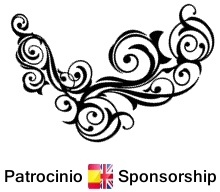
![]() La Playa de San Juan de la Canal está situada en la localidad de Soto de la Marina, perteneciente al municipio de Santa Cruz de Bezana. Es una pequeña playa emplazada en un entorno rocoso, al abrigo del Mar Cantábrico. Su fondo marino arenoso se mezcla con rocas, presentes en la zona. Dispone de varias zonas de aparcamiento anexas a la playa. Existen varios puntos de entrada.
La Playa de San Juan de la Canal está situada en la localidad de Soto de la Marina, perteneciente al municipio de Santa Cruz de Bezana. Es una pequeña playa emplazada en un entorno rocoso, al abrigo del Mar Cantábrico. Su fondo marino arenoso se mezcla con rocas, presentes en la zona. Dispone de varias zonas de aparcamiento anexas a la playa. Existen varios puntos de entrada. ![]() The Beach of San Juan of the Canal is placed in the locality of Soto de la Marina, belonging to the municipality of Santa Cruz de Bezana. It is a small beach located in a rocky environment, sheltered by the Cantabrian Sea. Its sandy sea bed is mixed with rocks, which are present in the zone. It has several zones of parking near to the beach. The access has several points of entry .
The Beach of San Juan of the Canal is placed in the locality of Soto de la Marina, belonging to the municipality of Santa Cruz de Bezana. It is a small beach located in a rocky environment, sheltered by the Cantabrian Sea. Its sandy sea bed is mixed with rocks, which are present in the zone. It has several zones of parking near to the beach. The access has several points of entry .  Acceso/Access
Acceso/Access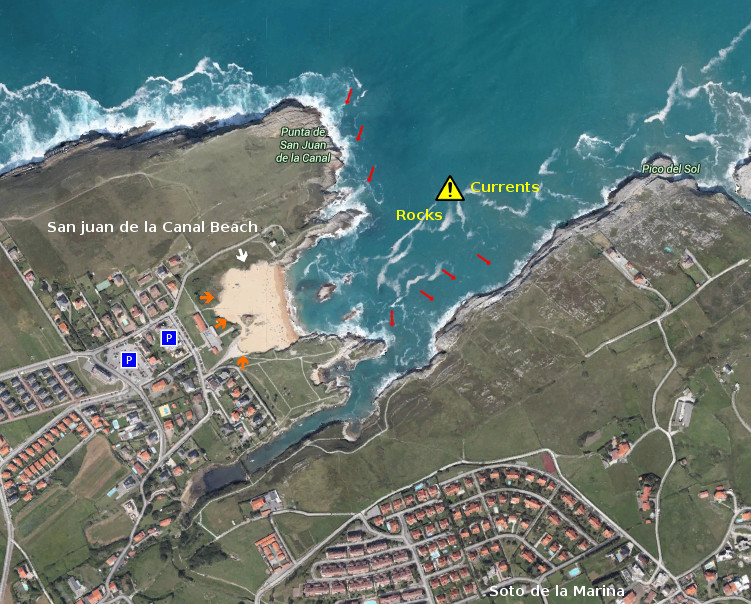
![]()
